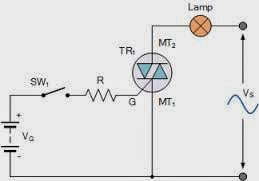TRIAC i.e. Triode for Alternating Current is a three terminal semiconductor device for controlling current. The TRIAC is an ideal device to be used for AC switching applications because it can control the current flow over both halves of an alternating cycle. The bi-directionality makes TRIACs very convenient switches for alternating current circuits, also allowing them to control very large power flows with milliampere-scale gate currents. It is possible to view the operation of a TRIAC in terms of two thyristors placed back to back.

One of the drawbacks of the TRIAC is that it does not switch symmetrically. It will often have an offset, switching at different gate voltages for each half of the cycle. This creates additional harmonics which is not good for EMC performance and also provides an imbalance in the system.
Filed Under: Electronic Projects


Questions related to this article?
👉Ask and discuss on EDAboard.com and Electro-Tech-Online.com forums.
Tell Us What You Think!!
You must be logged in to post a comment.